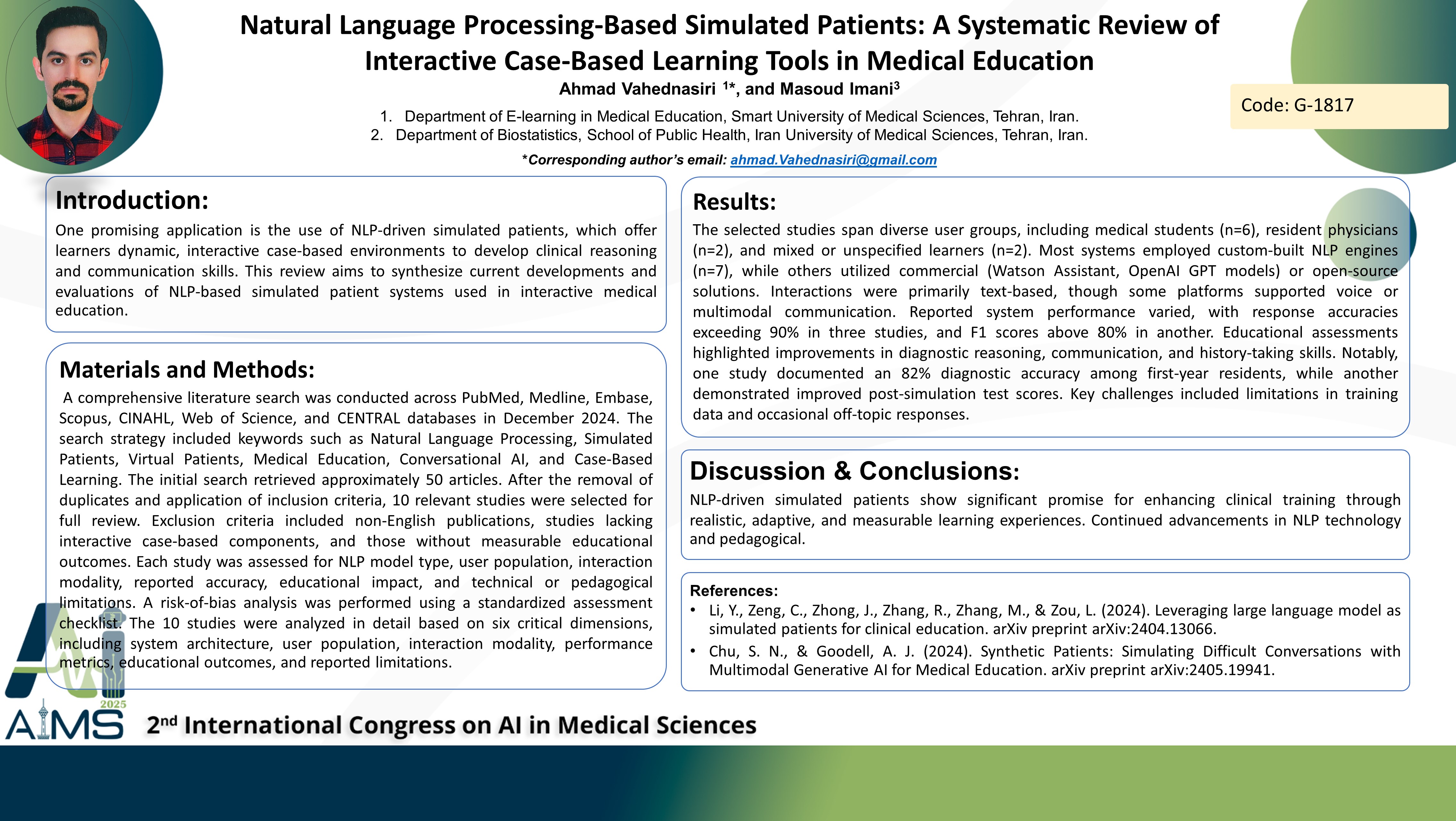Natural Language Processing-Based Simulated Patients: A Systematic Review of Interactive Case-Based Learning Tools in Medical Education
Code: G-1817
Authors: Ahmad Vahednasiri * ℗, Masoud Imani
Schedule: Not Scheduled!
Tag: Intelligent Virtual Assistant
Download: Download Poster
Abstract:
Abstract
Background and Aims: One promising application is the use of NLP-driven simulated patients, which offer learners dynamic, interactive case-based environments to develop clinical reasoning and communication skills. This review aims to synthesize current developments and evaluations of NLP-based simulated patient systems used in interactive medical education. Method: A comprehensive literature search was conducted across PubMed, Medline, Embase, Scopus, CINAHL, Web of Science, and CENTRAL databases in December 2024. The search strategy included keywords such as Natural Language Processing, Simulated Patients, Virtual Patients, Medical Education, Conversational AI, and Case-Based Learning. The initial search retrieved approximately 50 articles. After the removal of duplicates and application of inclusion criteria, 10 relevant studies were selected for full review. Exclusion criteria included non-English publications, studies lacking interactive case-based components, and those without measurable educational outcomes. Each study was assessed for NLP model type, user population, interaction modality, reported accuracy, educational impact, and technical or pedagogical limitations. A risk-of-bias analysis was performed using a standardized assessment checklist. From an initial pool of 50 publications, 10 studies met 8 predefined screening criteria and were analyzed in detail based on six critical dimensions, including system architecture, user population, interaction modality, performance metrics, educational outcomes, and reported limitations. Results: The selected studies span diverse user groups, including medical students (n=6), resident physicians (n=2), and mixed or unspecified learners (n=2). Most systems employed custom-built NLP engines (n=7), while others utilized commercial (Watson Assistant, OpenAI GPT models) or open-source solutions. Interactions were primarily text-based, though some platforms supported voice or multimodal communication. Reported system performance varied, with response accuracies exceeding 90% in three studies, and F1 scores above 80% in another. Educational assessments highlighted improvements in diagnostic reasoning, communication, and history-taking skills. Notably, one study documented an 82% diagnostic accuracy among first-year residents, while another demonstrated improved post-simulation test scores. Key challenges included limitations in training data and occasional off-topic responses. Conclusion: NLP-driven simulated patients show significant promise for enhancing clinical training through realistic, adaptive, and measurable learning experiences. Continued advancements in NLP technology and pedagogical.
Keywords
Computer Simulation, Education, Medical, Clinical Competence
